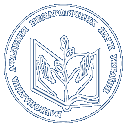- Джурило, Аліна Петрівна (orcid.org/0000-0002-5129-6724) (2017) The Role and Development Tendencies of the German Language in the Modern World Ukrainian Pedagogical Journal, 3. pp. 54-61. ISSN 2411-1317
|
Text
Джурило_Роль_і_тенденції_розвитку_німецької_мови.pdf Download (493kB) | Preview |
Abstract
The German language has had significant influence over other cultures and languages. During the 19th century, German literature enjoyed a prestigious phase, and many German words were exported to other languages. These «loan words», include «kindergarten», «delicatessen», «rucksack», «poltergeist», and «wanderlust». Today, Germany’s leading position in the global economy gives us another important reason to learn German. The German economy is the largest in Europe, and Germany has the world’s fourth largest economy, behind the United States, China, and Japan. This also means that German is a very important language for people working in the automotive, manufacturing, and engineering sectors, as these industries support the German economy and employ large numbers of people. German is also considered «the language of science», and is the second most spoken language by scientists from all over the world. German is one of the top three most used languages on the Internet, as approximately 6 per cent of all live websites are in German. There is also a large percentage of books written in German or translated into this European language. It is believed that 10 per cent of all printed books are in German. The Goethe Institute is considered the world’s most important cultural organization for German speakers and learners. This institution was founded in 1951 and now has more than 150 branches all over the world, and not just in German speaking countries. The Goethe Institute promotes German culture and language and has a varied educational program. German is the native language of over 100 million people in Germany, Austria, and parts of Switzerland, Luxembourg, Northern Italy, and Eastern Belgium and Eastern France. It is an official language in Germany, Austria, Switzerland, Liechtenstein, Luxembourg, Belgium, and Italy. In Europe, more people speak German than English, Spanish, French or Italian. German is among the top ten most commonly spoken languages in the world. It is one of the most frequently used languages on the Internet. In the United States, 1.38 million people speak German at home and 60 million people (nearly 25% of the population) are of German heritage. In Missouri, there are more than 30,000 native German speakers. There are 200 million speakers of German worldwide and 20 million students of German. Of these, 13 million are in Europe, Eastern Europe and the former USSR, where it is the most commonly used second language. In the United States there are 600,000 students learning German.
Downloads
Downloads per month over past year
Actions (login required)
 |
View Item |




